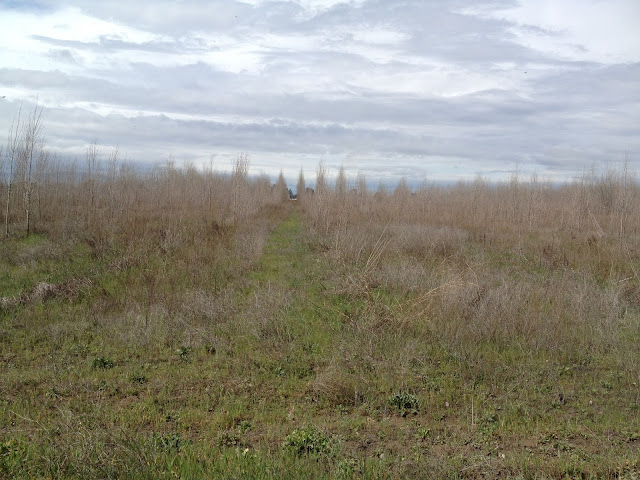True. But we certainly do.. It tells us when and how much to water our farm.
We can determine optimum time and amount of water to irrigate the orchard by tracking how much water is lost from the soil via evapotranspiration (the loss of moisture in the soil thru evaporation + the loss of water thru tree transpiration).
We can determine optimum time and amount of water to irrigate the orchard by tracking how much water is lost from the soil via evapotranspiration (the loss of moisture in the soil thru evaporation + the loss of water thru tree transpiration).
Here's an example. For almond orchards, we strive to maintain soil moisture level of 4-5 ft deep. But to keep it simple, consider this:
Let's say you measured soil moisture level at the end of Sunday to be 1 inch. And say, you can only tolerate half-inch depletion.
Monday ET = 0.15 inches --> 0.15'' of top soil lost moisture --> ok
Tuesday ET = 0.20 inches --> 0.35'' of top soil is dry --> ok
Wednes ET = 0.15 inches --> 0.50'' of top soil is dry --> ok
Thurs ET = 0.20 inches --> 0.70'' of top soil is dry --> NOT ok --> IRRIGATE NOW.
You get the idea..
 How do we get daily ET numbers? It's calculated from daily satellite and weather data (temp, humidity, wind) and the type of crop (ground cover) at the farm. I find that different sources provide slightly different numbers. This ET number can be different for different parts of your farm based on soil type differences.
How do we get daily ET numbers? It's calculated from daily satellite and weather data (temp, humidity, wind) and the type of crop (ground cover) at the farm. I find that different sources provide slightly different numbers. This ET number can be different for different parts of your farm based on soil type differences.
Alternative to doing this calculation is to install ground sensors to measure soil moisture up to several feet (like we did at Carpenter ranch). Based on the readings from these sensors, you can make irrigation decisions.
Let's say you measured soil moisture level at the end of Sunday to be 1 inch. And say, you can only tolerate half-inch depletion.
Monday ET = 0.15 inches --> 0.15'' of top soil lost moisture --> ok
Tuesday ET = 0.20 inches --> 0.35'' of top soil is dry --> ok
Wednes ET = 0.15 inches --> 0.50'' of top soil is dry --> ok
Thurs ET = 0.20 inches --> 0.70'' of top soil is dry --> NOT ok --> IRRIGATE NOW.
You get the idea..
 How do we get daily ET numbers? It's calculated from daily satellite and weather data (temp, humidity, wind) and the type of crop (ground cover) at the farm. I find that different sources provide slightly different numbers. This ET number can be different for different parts of your farm based on soil type differences.
How do we get daily ET numbers? It's calculated from daily satellite and weather data (temp, humidity, wind) and the type of crop (ground cover) at the farm. I find that different sources provide slightly different numbers. This ET number can be different for different parts of your farm based on soil type differences.Alternative to doing this calculation is to install ground sensors to measure soil moisture up to several feet (like we did at Carpenter ranch). Based on the readings from these sensors, you can make irrigation decisions.




















































